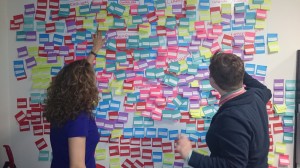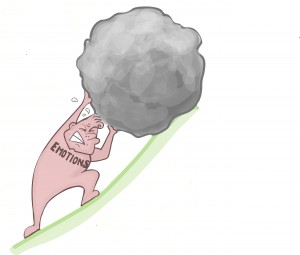Our two efforts to identify de-escalation strategies have struck gold amidst a mountain of muck. In one project led by Jill Spielfogel, professionals across disciplines nominated over 300 de-escalation strategies. We culled these down to about 90. Twenty-nine brave souls volunteered to sort and rate these strategies. Jill is now analyzing the data using concept mapping software.
Meanwhile, our effort to compile de-escalation strategies from the peer reviewed literature yielded over 1000 strategies, including duplicates!! In this photo, Jill and Sav Felix are seen in our initial efforts to make sense of them. We printed each one on a post it and started moving the post-its around my office wall. Yikes! This is old school data analysis.
Two sorting stages later, it is beginning to make sense. We have learned an amazing amount during these past few months. We can’t wait to get these efforts into a format that we can disseminate and eventually add into the Handling Intense Emotions curriculum.

